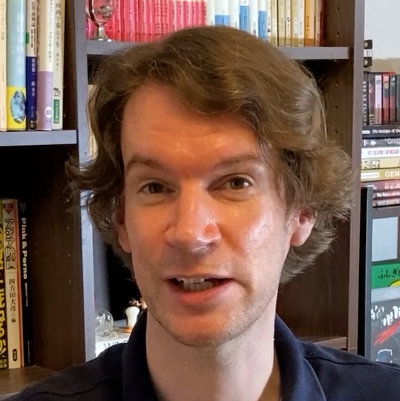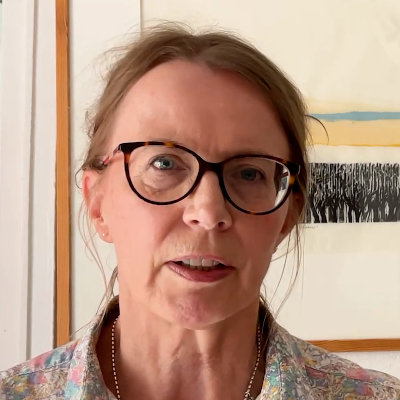Krytyka filmowa - długie formy pisemne. Analiza filmu, esej i recenzja
Pierwszy z trzech bloków Międzynarodowego Kursu Dziennikarstwa i Krytyki Filmowej Asian Cinema Education poświęcony analizie i interpretacji filmów azjatyckich oraz dłuższym formom pisemnym.
Kurs krytyki filmowej jest już dostępny! Webinary można oglądać w dowolnym czasie, dostosowując tempo nauki do własnych potrzeb.
Cały kurs składa się z 40 webinarów, podzielonych na trzy bloki tematyczne. Po module dedykowanym krytyce filmowej, następuje kurs merytorycznej promocji festiwalu, skupiający się na umiejętnościach dziennikarskich, związanych z pracą przy wydarzeniach filmowych. Trzecia część to opowieść o historii dziennikarstwa poświęconego azjatyckiemu kinu.
Aktualnie webinary można oglądać bez zapisów, w charakterze wolnego słuchacza.
Uczestnictwo w kursie jest bezpłatne. Webinary prowadzone są wyłącznie w języku angielskim - jest to język roboczy całego kursu.
Więcej informacji o kursach
Krytyka filmowa - opis kursu
Istnieje wiele różnych aspektów związanych z analizą filmu. Istnieje także wiele form krytyki filmowej. Bycie krytycznym nie oznacza negatywnej oceny. W krytyce chodzi raczej o umiejętność powiązania ze sobą różnych elementów: kontekstu kulturowego, zaplecza produkcyjnego, okoliczności towarzyszących produkcji, czy biografii autora.
Kurs zajmuje się krytyką filmową z różnych perspektyw, począwszy od stylu wizualnego, stylu filmowego, wartości produkcyjnych, czytania scenariusza, perspektywy narracji lub postaci; do kontekstu politycznego lub społeczno-ekonomicznego. Uczestnictwo w 15 eksperckich webinarach to jedyna w swoim rodzaju szansa, by nauczyć się, jak analizować film i jak o nim opowiadać nie narzucając subiektywnej interpretacji, dostarczając za to czytelnikowi narzędzi do samodzielnego odkrywania znaczeń. To również zbiór praktycznych wskazówek dla początkujących dziennikarzy i krytyków filmowych, począwszy od konstrukcji tekstu, po uwagi dotyczące współpracy z potencjalnym wydawcą. Aktywne uczestnictwo w kursie daje możliwość konsultowania swoich prac i pomysłów z doświadczonymi krytykami i organizatorami festiwali filmowych, zadania nurtujących pytań, a także poznania pasjonatów kina Azji z całego świata.
Lekcje
- 1. Wstęp - Łukasz Mańkowski
- 2. Analiza filmu. Styl wizualny: Kolory i światło - Łukasz Mańkowski
- 3. Analiza filmu. Styl wizualny: Ruch i kadrowanie - Łukasz Mańkowski
- 4. Analiza filmu. Wartości produkcyjne: Scenografia i kostiumy - Łukasz Mańkowski
- 5. Analiza filmu. Postprodukcja: Montaż i dźwięk - Łukasz Mańkowski
- 6. Analiza filmu. Konteksty polityczne i kulturowe - Łukasz Mańkowski
- 7. Analiza filmu. Narracja - Łukasz Mańkowski
- 8. Analiza filmu. Postaci - Łukasz Mańkowski
- 9. Analiza filmu. Autorzy, gatunki i kino japońskie - Tom Mes
- 10. Ci szaleni Japończycy: Unikanie stereotypów w pisaniu o filmach - Eija Niskanen
- 11. Historia stereotypów dotyczących postaci z Azji w hollywoodzkim kinie głównego nurtu - Jasper Sharp
- 12. Jak napisać esej – Marcin Krasnowolski
- 13. Jak napisać recenzję - Panos Kotzathanasis
- 14. Umiejętności redakcyjne: Jak rozmawiać ze swoim wydawcą. Dwa punkty widzenia - Panos Kotzathanasis
- 15. Ekspercki komentarz do esejów i recenzji uczestników – Łukasz Mańkowski
- 16. Ekspercki komentarz do esejów i recenzji uczestników – Panos Kotzathanasis
Lista filmów
Lista filmów, które warto zobaczyć przystępując do kursu:
- "Parasite" (Bong Joon-ho, 2019)
- "Złodziejaszki" (Hirokazu Koreeda, 2018)
- "Pokojówka" (Kim Ki-young, 1960)
- "Spragnieni miłości" (Wong Kar Wai, 2000)
- "Żałobna parada róż" (Toshio Matsumoto, 1969)
- "Terroryści" (Edward Yang, 1986)
- "Marlina: Zbrodnia w czterech aktach" (Mouly Surya, 2017)
- "Kłamstewko" (Lulu Wang, 2019)
- "Siedzący słoń" (Hu Bo, 2018)
- "Mikrosiedlisko" (Jeon Go-woon, 2017)
Zadanie dla zarejestrowanych uczestników
Napisz esej (do 2000 słów) lub recenzję (od 800 do 1000 słów). Może to być esej oscylujący wokół jednego filmu, motywu, tematu albo recenzja jednego filmu. Zachęcamy do łączenia perspektyw (krytyczna, analityczna, kulturoznawcza, akademicka etc.). Nie oczekujemy klasycznych recenzji (choć takie są również mile widziane), doceniamy prace będące twórczą syntezą form.
Praca powinna dotyczyć jednego z filmów z zaproponowanej listy. Jeśli chciałabyś/chciałbyś napisać na temat innego filmu, skontaktuj się z naszym ekspertem. Pracę należy przesłać w terminie do 15 października 2021.
Eksperci kursu

Panos Kotzathanasis
Krytyk filmowy i recenzent, specjalizuje się w kinie Azji Wschodniej. Jest właścicielem i administratorem Asian Movie Pulse, jednego z największych portali specjalizujących się w kinie Azji. Często pisuje do Hancinema i Taste of Cinema, jego teksty ukazują się też w innych publikacjach, takich jak estoński SIRP, słowacki Film.sk, brytyjski Asian Dialogue, japoński Cinefil i indyjski Filmbuff. Od 2019 roku współpracuje z grecką Thessaloniki Cinematheque, gdzie jest kuratorem licznych retrospektyw, w tym tych poświęconych twórczości Fruit Chana i współczesnemu kinu Azji.

Marcin Krasnowolski
Dziennikarz freelancer i filmoznawca, selekcjoner Festiwalu Filmowego Pięć Smaków. Autor licznych artykułów poświęconych filmom azjatyckim. Interesuje się przede wszystkim kinem koreańskim, hongkońskim i chińskim, bada przepływ inspiracji między kinematografiami azjatyckimi, a nieazjatyckimi. Pracuje również w międzynarodowej produkcji telewizyjnej.

Łukasz Mańkowski
Łukasz Mańkowski jest krytykiem i badaczem azjatyckiego kina, tłumaczem z języka japońskiego i konsultantem programowym festiwali. Na wydziale Artes Liberales Uniwersytetu Warszawskiego przygotowuje interdyscyplinarną pracę doktorską na temat postrzegania japońskiej nowej fali i kina awangardowego i prowadzi zajęcia z kina Azji. Został zaproszony do udziału w wielu warsztatach dla krytyków, w tym Young Critics Programme na festiwalu w Rotterdamie w 2021 roku.

Tom Mes
Tom Mes jest współtwórcą strony Midnight Eye, autorem książek o Takashim Miike i Shinyi Tsukamoto, a także współautorem publikacji „The Midnight Eye Guide to New Japanese Film”. Jako krytyk filmowy pisał między innymi dla magazynów Film Comment, Sight & Sound, Rue Morgue, De Filmkrant i Kateigaho. Przygotowywał opisy i komentarze audio do licznych wydań japońskich filmów na DVD i Blu-rayach. Jest współscenarzystą różowego musicalu Shinjiego Imaoki „Podwodna miłość” („Onna no Kappa”), zagrał też w filmie Kiki Sugino „Taksu” („Yokudo”).

Eija Niskanen
Eija Niskanen ukończyła studia z edukacji artystycznej na fińskim Uniwersytecie w Jyväskylä, gdzie napisała pracę magisterską o Akirze Kurosawie, oraz studia magisterskie z krytyki filmowej i telewizyjnej na UCLA. Przygotowywała branżowe raporty dotyczące anime i japońskiej kinematografii, pisała artykuły akademickie dotyczące badań nad festiwalami filmowymi i anime. Wykłada też na Uniwersytecie w Helsinkach. Jest jedną z założycielek Międzynarodowego Festiwalu Filmowego w Helsinkach i festiwalu Helsinki Cine Aasia, w którym pełni też funkcję dyrektorki programowej.

Jasper Sharp
Pisarz, filmowiec i kurator znanym ze swoich tekstów o kinie Azji, a także współzałożyciel poświęconej japońskiemu kinu strony Midnight Eye. Jest autorem książek "The Midnight Eye Guide to New Japanese Film" (2004), napisanej wspólnie z Tomem Mesem, "Za różową kurtyną. Historia japońskiego kina erotycznego" (2008) i "The Historical Dictionary of Japanese Cinema" (2011). Jego teksty ukazywały się między innymi w Sight & Sound, Guardianie, The Japan Times, Kateigaho i Film International, oraz na licznych wydawnictwach płytowych. W swojej pracy doktorskiej "Japanese Widescreen Cinema: Commerce, Technology and Aesthetics" badał pojawienie się technologii szerokoekranowych w japońskim kinie w latach 50. Wraz z Timem Grabhamem wyreżyserował dokument o śluźniach "The Creeping Garden" (2014). Obecnie pracuje dla Arrow Films jako producent płyt.
Kontakt
Masz pytania? Napisz do nas!
education@piecsmakow.pl







